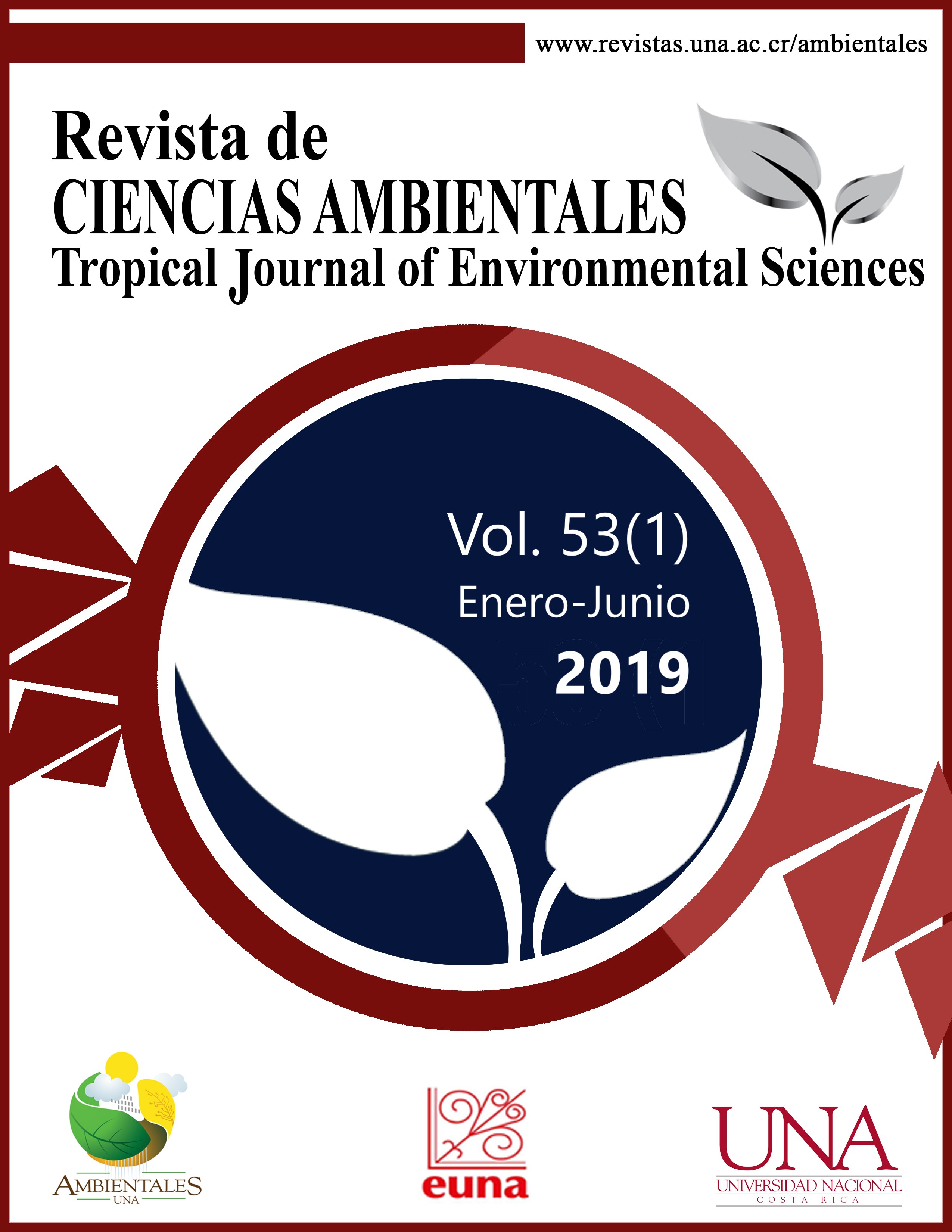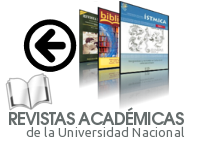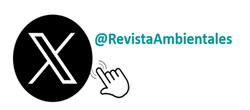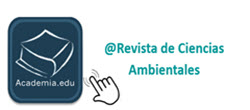Association Between Stingless Bees (Apidae, Meliponini) and the Dry Forest Flora in the Northern Region of Guanacaste, Costa Rica
DOI:
https://doi.org/10.15359/rca.53-1.4Keywords:
Native bees; pollination; tropical forest.Abstract
Stingless bees are important pollinators in tropical and subtropical regions. They are associated with the flora that provides them with food, sites for nesting, resins, sap, and exudates. We sought to determine the association between bees and flora in the Cerro El Hacha sector (intervened primary forest) and the Pocosol sector (secondary forest) of the Guanacaste National Park, where the nests were inventoried in 33 plots of 20 x 20 m². Pollen from plants was collected within the plots and around the nests (radius 500 m). Corbicular charges of pollen were, also, collected and analyzed; they came from bees trapped with entomological nets at the entrance of the nests. In the Cerro El Hacha sector, pollen was collected from three nests of Scaptotrigona pectoralis, and in the Pocosol sector pollen from was collected from two nests of Trigona fulviventris. A density of 4.43 nests / ha-1 was obtained from these species: Tetragonisca angustula, Tetragona ziegleri, Plebeia frontalis, and Trigona fulviventris. The nests were found in the trunks of trees, with a preference for Quercus oleoides, where 50 % of them were found. The food plants used by S. pectoralis in Cerro El Hacha were the following: Cupania guatemalensis (30 %), Byrsonima crassifolia (21 %), and Cedrela odorata (15 %). While for T. fulviventris in the Pocosol sector, the most important plants were Baltimora recta (26 %), Dorstenia contrajerva (9 %), and Desmodium sp. (9 %). The important role played by the tree species Quercus oleoides for the conservation of the populations of these insects is evident.
References
Aguilar, I., Herrera, E. y Zamora, G. (2013). Stingless bees of Costa Rica. En Pedro Pcompletar apellido.; Silvia R Pcompletar apellido, M. Pcompletar apellido y Roubik D. Pcompletar apellido (Eds.), Pot Honey. Vit. Springer New York. Recuperado de https://link.springer.com/content/pdf/10.1007%2F978-1-4614-4960-7.
Aguilar Sierra, C. I. y Smith Pardo, A. H. (2009). Abejas visitantes de Mimosa pigra L. (Mimosaceae): Comportamiento de pecoreo y cargas polínicas. Acta Biológica Colombiana, 14(1), 109-120. Recuperado de http://www.scielo.org.co/pdf/abc/v14n1/v14n1a06.pdf
Araújo, E. D., Costa, M., Chaud-Netto, J. y Fowler, H. G. (2004). Body size and flight distance in stingless bees (Hymenoptera: Meliponini): inference of flight range and possible ecological implications. Brazilian Journal of Biology, 64(3B), 563–568. https://doi.org/10.1590/S1519-69842004000400003
Batista, M., Abreu, B., Dutra, R., Cunha, M., do Amaral, F., Torres, L. y Ribeiro, M. (2016). Chemical composition and antioxidant activity of geopropolis produced by Melipona fasciculata (Meliponinae) in flooded fields and cerrado areas of Maranhão State, northeastern Brazil. Acta Amazonica, 46(3), 315–322. Recuperado de http://dx.doi.org/10.1590/1809-4392201600034
Eltz, T., Brühl, C. A. y Linsenmair, K. E. (2002). Determinants of stingless bee nest density in lowland dipterocarp forests of Sabah, Malaysia. Oecologia, 131(1), 27–34. doi: 10.1007/s00442-001-0848-6
Espina, D. y Ordetx, G. S. (1983). Flora apícola tropical. Cartago, Costa Rica: Editorial Tecnológica de Costa Rica.
Ferreira, M. G. y Absy, M. L. (2013). Pollen analysis of the post-emergence residue of Melipona (Melikerria) interrupta Latreille (Hymenoptera: Apidae) bred in the central Amazon region. Acta Botanica Brasilica, 27(4), 709–713. https://doi.org/10.1590/S0102-33062013000400009
Figueroa-Mata, G., Prendas-Rojas, J. P., Ramírez-Bogantes, M., Aguilar-Monge, I., Herrera-González, E. y Travieso-González, C. M. (2016). Identificación de abejas sin aguijón (Apidae: Meliponini) a partir de la clasificación de los descriptores SIFT de una imagen del ala derecha anterior. Revista Tecnología en Marcha, 29(5), 51–63. https://doi.org/10.18845/tm.v29i5.2585
Fonte, L., Betancourt, D., Demedio, L. y Aguilar, I. (2009). Gliricidia sepium: Leguminosa forrajera útil como habitáculo de Melipona beecheii en sistemas agrarios. Revista Biocenosis, 22 (1-2).
Frankie, G. W., Vinson, S. B., Rizzardi, M. A., Griswold, T. L., O'Keefe, S. y Snelling, R. R. (1997). Diversity and Abundance of Bees Visiting a Mass Flowering Tree Species in Disturbed Seasonal Dry Forest, Costa Rica. Journal of the Kansas Entomological Society, 70(4), 281-296.
Frankie, G. W., Vinson, S. B., Rizzardi, M. A., Griswold, T. L., Coville, R. E., Grayum, M. H., Martinez, L. E. S., Foltz-Sweat, J., y Pawelek, J. C. (2013). Relationships of Bees to Host Ornamental and Weedy Flowers in Urban Northwest Guanacaste Province, Costa Rica. Journal of the Kansas Entomological Society, 86(4), 325-351. doi: 10.2317/JKES121222.1
Frankie, G. W., Coville, R. E., Pawele, J. C., Jadallah, C. C., Vinson, S. B. y Martínez, L. E. S. (2018). Bee-Flower-People Relationships, Field Biologists, and Conservation in Northwest Urban Costa Rica and Beyond. Zoosymposia, 12, 018–028. doi: 10.11646/zoosymposia.12.1.4
Freitas, B. M., Imperatriz-Fonseca, V. L., Medina, L. M., Kleinert, A. de M. P., Galetto, L., Nates-Parra, G., y Quezada-Euán, J. J. G. (2009). Diversity, threats and conservation of native bees in the Neotropics. Apidologie, 40(3), 332-346. doi:10.1051/apido/2009012.
Jarau, S., y Barth, F. G. (2008). Stingless bees of the Golfo Dulce region, Costa Rica (Hymenoptera, Apidae, Apidae, Meliponini). Zugleich Kataloge der oberösterreichischen Landesmuseen, 80, 267-276.
Moreno F. A. y Cardozo A. F. (1997). Abundancia de abejas sin aguijón (Meliponinae) en especies maderables del Estado de Portuguesa, Venezuela. Vida Silvestre Neotropical, 6(1-2), 53-56.
Prendas, J. P., Figueroa, G., Travieso, C., Herrera, E., Aguilar, I. y Ramírez, M. (2013). Sistema automático de clasificación de abejas sin aguijón (Apidae: Meliponini) basado en el contorno y venación de sus alas. Propuesta y avances. En Memoria del VIII Congreso Mesoamericano de abejas nativas: Biología, cultura y uso sostenible. Heredia, Costa Rica. 26 al 31 de agosto de 2013. Recuperado de http://www.cinat.una.ac.cr/VIIICongresoMesoamericano/docs/Memoria.pdf
Ramalho, M., Kleinert-Giovannini, M. y Imperatriz-Fonseca, V. L. (1990). Important bee plants for stingless bees (Melipona and Trigonini) and Africanized honeybees (Apis mellifera) in neotropical habitats: a review. Apidologie, 21(5), 469-488. https://doi.org/10.1051/apido:19900508
Ravelo, K., Hernández, F., Paneque, I., Toledo, L. y Gutiérrez, H. (2014). Relación de la población natural de abejas de la tierra (Melipona beecheii) con la flora en el valle San Andrés. Revista Cubana de Ciencias Forestales, 2(1), 21-34.
Roubik, D. (1983). Nest and colony characteristics stingless bees Panama. J. Kansas Ent. Soc, 56(3), 327-355.
Roubik, D. (2006). Stingless bee nesting biology. Apidologie, 37(2006), 124-143 doi: 10.1051/apido:2006026.
Sánchez, L. A. (2001). Métodos palinológicos de análisis. (Documento no publicado). Centro de Investigaciones Apícolas Tropicales (CINAT-UNA). Heredia, Costa Rica.
Sánchez, M. (2013). Protocolo de establecimiento y medición de parcelas permanentes de muestreo en bosque natural. para la Red de parcelas permanentes de monitoreo de ecosistemas forestales (RedMEF). Instituto de Investigación y Servicios Forestales. Universidad Nacional, Heredia, Costa Rica.
Slaa, E., Sánchez, L. A., Malagodi-Braga, K. y Hofstede, F. (2006). Stingless bees in applied pollination: practice and perspectives. Apidologie, 37(2006), 293-315. https://doi.org/10.1051/apido:2006022
Solano, J. y Villalobos, R. (s. f.) Regiones y subregiones climáticas de Costa Rica. Instituto Meteorológico Nacional, San José, Costa Rica.
Sparagnino, C., Chianetta, P., y Basilio, A. M. (2014). Especies arbóreas utilizadas por abejas meliponas (Apidae: Meliponini) en el bosque chaqueño semiárido en Formosa (Argentina). Agronomía y Ambiente, 34(2014), 85-91.
Tosi, J. (1969). Mapa ecológico de Costa Rica. Instituto Geográfico Nacional, San José, Costa Rica.
Van Veen, J. W. (1999). Colony reproduction in stingless bees. Costa Rica: Litografía e imprenta Lil.
Vergara, B., Villa, A. y Nates, G. (1986). Nidificación de meliponinos (Hymenoptera: Apidae) de la Región Central de Colombia. Rev. Biol. Trop., 34(2), 181-184.
Wille, A. (1983). Biology of the stingless bees. Annual review of entomology, 28(1), 41-64. https://doi.org/10.1146/annurev.en.28.010183.000353
Wilms, W. y Wiechers, B. (1997). Floral resource partitioning between native Melipona bees and the introduced Africanized honey bee in the Brazilian Atlantic rain forest. Apidologie, 28, 339-355. https://doi.org/10.1051/apido:19970602
Downloads
Published
How to Cite
Issue
Section
License

This work is licensed under a Creative Commons Attribution-NonCommercial-ShareAlike 4.0 International License.



















